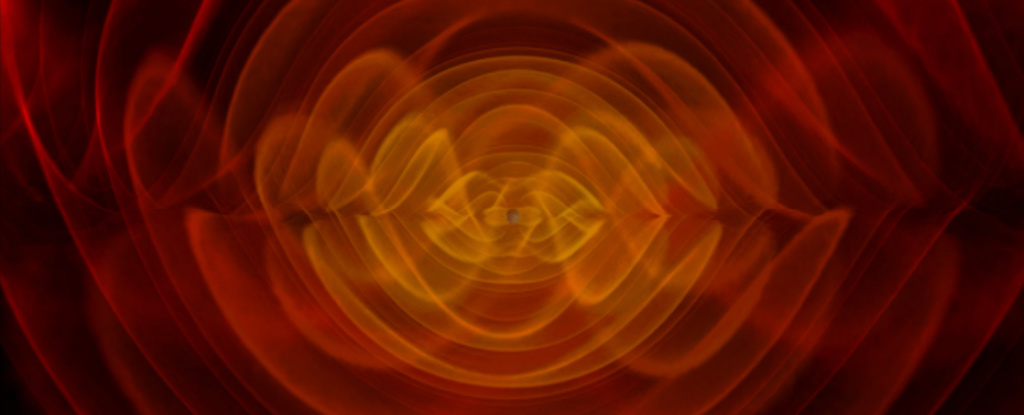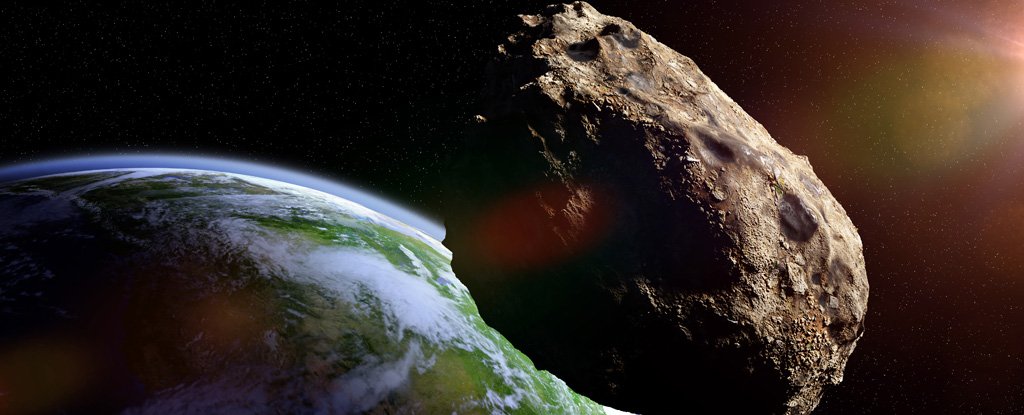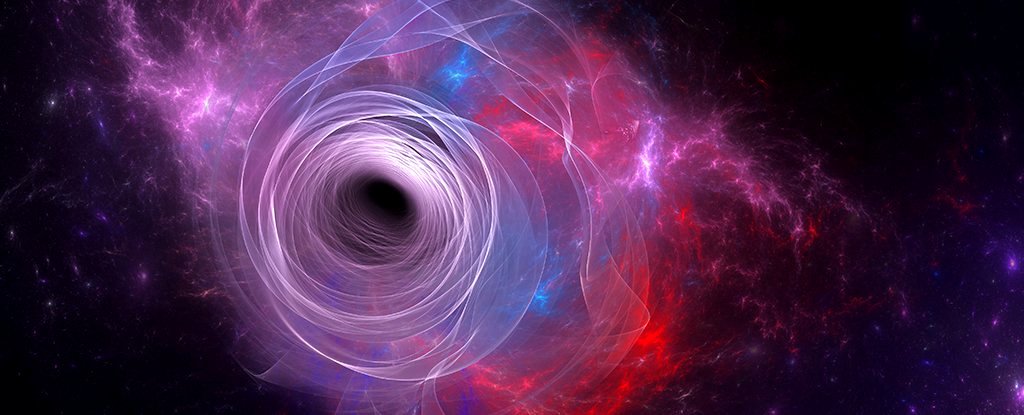The universe should hum.
Every supernova, every merger of neutron stars or black holeseven fast-spinning lone neutron stars could, or should, be a source gravitational waves.
Event the rapid inflation of space after Big Bang A cascade of gravitational waves of its own should have started 13.8 billion years ago.
Like a stone dropped into a pond, these massive events should send out ripples that reverberate through the fabric of space-time—faint expansions and contractions of space that are apparent to us as discrepancies in what exactly timed signals should be could.
Taken together, this mix of signals forms a random or “stochastic” buzz known as the gravitational wave background, and it is possibly one of the most sought-after discoveries in gravitational-wave astronomy.
The new frontier in space exploration
It is thought – just like the discovery of the cosmic microwave background before did (and do) that the discovery of the gravitational-wave background will revolutionize our understanding of the universe and how it evolved.
“Detecting a stochastic background of gravitational radiation can provide a wealth of information about astrophysical source populations and processes in the very early Universe that is otherwise inaccessible,” explains theoretical physicist Susan Scott of the Australian National University and ARC Center of Excellence for the detection of gravitational waves.
“For example, electromagnetic radiation provides a picture of the universe at the earliest at the time of the last scattering (about 400,000 years after the Big Bang). However, gravitational waves can give us information as far back as the beginning of inflation, only ∼10-32 Seconds after the Big Bang.”
To understand the importance of the gravitational-wave background, let’s talk a little about another relic of the Big Bang: the cosmic microwave background, or CMB.
Shortly after our universe began ticking and space began to cool, the bubbling foam that was everything congealed into an opaque soup of subatomic particles in the form of ionized plasma.
Any radiation that went out with it was scattered, preventing it from traveling a great distance. Only when these subatomic particles recombined into atoms, an era known as the epoch of recombination, was light able to move freely throughout the universe and on through the eons.
About 380,000 years after the Big Bang, the first flash of light burst through space, and as the universe grew and grew over the billions of years that followed, that light was tugged into every corner. It still surrounds us today. This radiation is extremely weak but detectable, especially in the microwave range. This is the CMB, the first light in the universe.
The irregularities in this light, called anisotropies, were caused by small temperature variations represented by this first light. It’s hard to overstate how phenomenal its discovery was: the CMB is one of the few probes we have on the state of the early Universe.
The discovery of the gravitational wave background would be a great repeat of that achievement.
“We expect that the detection and analysis of the gravitational-wave background will revolutionize our understanding of the Universe,” says Scott, “in the same way that observation of the cosmic microwave background and its anisotropies paved the way.”
The buzz beyond the boom crash
That first proof of gravitational waves was made only recently, in 2015.
Two black holes that collided about 1.4 billion years ago emitted waves traveling at the speed of light; On Earth, these expansions and contractions of space-time triggered a very faint one instrument designed and refined for decades, waiting to discover such an event.
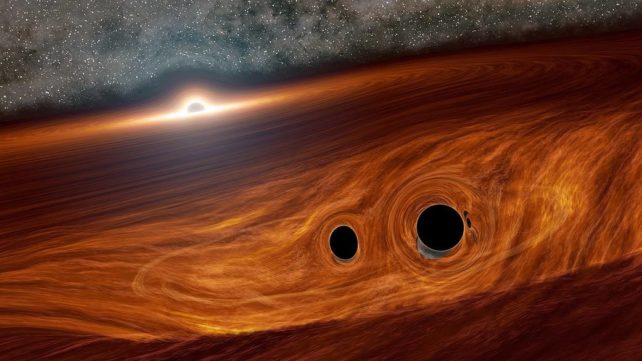
It was a monumental discovery for several reasons. It gave us direct confirmation for the existence of black holes for the first time.
It confirmed a prediction of general theory of relativity 100 years earlier that gravitational waves are real.
And it meant that this tool, the gravitational-wave interferometer that scientists had been working on for years, would revolutionize our understanding of black holes.
And it has. The LIGO and Virgo interferometers detected it almost 100 Previous gravitational-wave events: those strong enough to produce a clear signal in the data.
These interferometers use lasers that illuminate special tunnels several kilometers long. Affected by the stretching and compressing of space-time caused by gravitational waves, these lasers create an interference pattern that scientists can use to infer the properties of the compact objects producing the signals.
But the gravitational wave background is a different beast.
“An astrophysical background is created by the confused noise of many faint, independent, and unresolved astrophysical sources,” says Scott.
“Our ground-based LIGO and Virgo gravitational-wave detectors have already detected gravitational waves from dozens of individual black hole mergers, but the astrophysical background of stellar mass is binary black hole Mergers are expected to be a major source of GWB for this current generation of detectors. We know that there are large numbers of these mergers that cannot be resolved individually, and together they create a random buzz in the detectors.”
The speed at which duplicate black holes collide in the universe is unknown, but the speed at which we can detect them gives us a baseline from which to make an estimate.
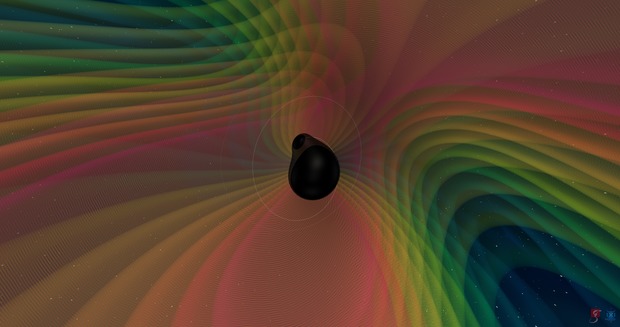
Scientists believe it ranges from about one merger per minute to several per hour, with the detectable signal from each lasting just a fraction of a second. These individual, random signals would probably be too weak to be detected, but would combine to create a static background noise; Astrophysicists compare it to that Popcorn pops.
This would be the source of a stochastic gravitational-wave signal that we might expect to see using instruments such as the LIGO and Virgo interferometers. These instruments are currently being maintained and prepared, and complemented by a third observatory. KAGRA in Japanin a new observing run in March 2023. Evidence of the popcorn GWB through this collaboration is not excluded.
However, these are not the only tools in the gravitational-wave kit. And other tools will be able to detect other sources of the gravitational-wave background. One such tool that is still 15 years away is this Laser Interferometer Space Antenna (LISA)scheduled to hit the market in 2037.
It is based on the same technology as LIGO and Virgo, but with “arms” that are 2.5 million kilometers long. It will operate at a much lower frequency range than LIGO and Virgo and will therefore detect different types of gravitational wave events.
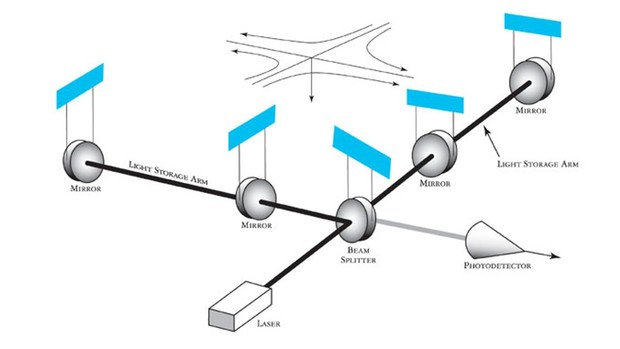
“The GWB isn’t always popcorny,” Scott tells ScienceAlert.
“It can also consist of individual deterministic signals that overlap in time and create a confusion sound, similar to the background conversations at a party. An example of confusion noise is the gravitational radiation produced by the Galactic population of compact white dwarfs, an important source of confusion noise for LISA. In this case, the stochastic signal is so strong that it comes to the fore and acts as an additional noise source when trying to detect other weak gravitational-wave signals in the same frequency band.”
Theoretically, LISA could also detect cosmological sources of the gravitational wave background, such as cosmic inflation shortly after the Big Bang or cosmic strings – Theoretical cracks in the universe which may have formed at the end of inflation and is losing energy through gravitational waves.
Timing at the pulse of the cosmos
There’s also a giant galactic-scale gravitational-wave observatory that scientists have been exploring looking for evidence of the gravitational-wave background: pulsar timing arrays. pulsars are kind of neutron starthe remnants of once-massive stars that died in a spectacular supernova, leaving only a dense core.
Pulsars rotate in such a way that radio beams sweep past Earth from their poles like a cosmic beacon; Some of them do this at incredibly precise intervals, which is useful for a range of applications like navigation.
But the stretching and compressing of spacetime should, in theory, produce tiny irregularities in the timing of pulsar flashes.
A pulsar showing slight timing inconsistencies might not mean much, but if a cluster of pulsars shows correlated timing inconsistencies, it could indicate gravitational waves produced by inspirational supermassive black holes.
Scientists have found tempting hints this source of gravitational-wave background in pulsar timing arrays, but we don’t yet have enough data to determine if this is the case.
We are so tantalizingly close to a discovery of the gravitational-wave background: the astrophysical background that reveals the behavior of black holes throughout the Universe; and the cosmological background – the quantum fluctuations observed in the CMB, inflation, the Big Bang itself.
This, says Scott, is the white whale: the one we shall not see until after the difficult work of decomposing the background into the discrete sources that make up the noisy whole.
“While we look forward to a wealth of information to come from the discovery of an astrophysically generated background, observing gravitational waves from the Big Bang is truly the ultimate goal of gravitational-wave astronomy,” she says.
“By removing this binary black hole foreground, proposed third-generation ground-based detectors, such as the Einstein Telescope and Cosmic Explorer, could be sensitive to a cosmologically generated background of 5-year observations, entering the realm where important cosmological observations can be made.”


